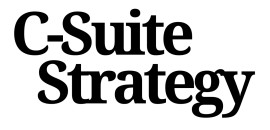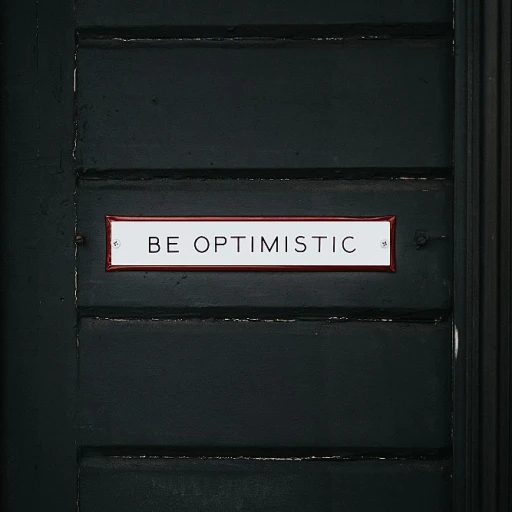
Understanding the Distinct Roles
Unique Responsibilities and Distinctions
Understanding the unique responsibilities and distinctions between the CEO and Chairman roles is crucial in the governance structure of any organization. The CEO, or Chief Executive Officer, is primarily responsible for the day-to-day operations, focusing on implementing the strategic direction and making operational decisions to drive the business forward. They are strategic leaders and decision-makers who guide the company through its daily challenges and opportunities. In contrast, the Chairman of the Board plays a different yet complementary role in corporate governance. The Chairman, often regarded as the board chair, is responsible for leading the board of directors and ensuring that the board fulfills its governance, strategic planning, and oversight responsibilities. This role includes shaping the board's agenda, facilitating effective board meetings, and maintaining a check on the CEO's authority to safeguard against conflicts of interest and ensure long-term strategic success. Clear distinctions between the responsibilities of the CEO and Chair are essential to prevent overlaps in their roles within the corporate and board governance framework. This distinction fosters an environment where strategic decision-making processes are both efficient and accountable, ensuring each executive officer fulfills their specific duties without encroaching on the responsibilities of the other. For further insights into the differentiation between these roles, you might want to explore understanding the roles of Executive Director vs CEO, which sheds light on similar distinctions within the broader context of company management roles. The nuanced differences between the Chairman and CEO roles underline the necessity for a well-defined governance structure that enables strategic collaboration and aligns with the company's objectives and vision.The Power of Collaboration
Fostering Effective Collaboration
In the intricate dance of corporate governance, the synergy between the CEO and the chairman is pivotal. These two roles, while distinct, are complementary, and their collaboration can significantly influence the strategic direction of the company. The CEO, as the chief executive officer, is responsible for the day-to-day operations and implementing the board's strategic decisions. Meanwhile, the chairman leads the board of directors, ensuring effective governance and oversight.
The collaboration between the CEO and the chairman is not just about attending meetings or making decisions. It's about creating a harmonious relationship that leverages their unique strengths. The CEO brings insights from the trenches of daily operations, while the chairman offers a broader perspective, focusing on long-term goals and governance structure. This dynamic requires a balance of authority and influence, where both parties respect each other's roles and expertise.
Effective collaboration can be achieved through regular communication and a shared vision for the organization. This ensures that both the CEO and the chairman are aligned in their objectives and can work together to navigate challenges. The board directors play a crucial role in this relationship, providing support and guidance to both the CEO and the chairman.
However, it's essential to recognize potential conflicts of interest that may arise. Clear boundaries and defined roles can help mitigate these issues, allowing the CEO and the chairman to focus on their primary responsibilities without overstepping each other's domains.
Ultimately, the power of collaboration between the CEO and the chairman lies in their ability to combine their leadership skills to drive the company forward. By fostering a culture of mutual respect and open communication, they can effectively guide the organization through the complexities of the business world.
Balancing Authority and Influence
Strategic Leadership Balance
In the intricate dance of overseeing a company's day-to-day operations and its long-term vision, the CEO and chairman must continuously balance authority and influence. The governance structures in place often define the boundaries for each role, but the dynamics between the board chair and the CEO chair remain central to ensuring effective decision-making.
The chairman is generally tasked with steering the board directors, focusing on key strategic decisions and leveraging their influence to guide the company’s overarching business objectives. This often involves aligning the corporate governance with the company’s strategic goals, ensuring that all aspects of the organization are working towards the same direction.
Meanwhile, the CEOs are responsible for executing the strategic direction laid out, effectively translating the board's vision into operational success. This includes a focus on the day-to-day operations and maximizing the company’s capabilities. A crucial element in this relationship is understanding the difference chairman and CEO roles bring in terms of perspective and leadership.
Conflicts of interest can arise if the boundaries of influence aren't clearly defined. Balancing these roles calls for a continuous dialogue and assessment, often requiring robust corporate protocols to mediate any potential disputes that can compromise the company's success. Regular meetings and open communication lines between the executive officer and the board chair are essential.
In navigating these dynamics, companies can also look towards examples of successful governance, where a clear demarcation of responsibilities leads to optimized strategic decisions. Understanding how both roles complement rather than conflict can provide significant benefits to the organization’s strategic outcomes.
For more insights on aligning strategic roles within an organization, consider exploring understanding the role of a chief sales officer.
Challenges in Role Overlaps
Managing the Intersection of Authority and Influence
In the intricate dance of corporate governance, the CEO and Chairman often find their roles intertwining, presenting a unique challenge in balancing authority and influence. The governance structure places the Chairman at the helm of the board, acting as a steward of strategic direction, while the CEO is immersed in the day-to-day operations of the business. While both hold significant sway over organizational outcomes, their influence manifests differently. The Chairman typically oversees board directors, ensuring the broader strategic objectives set by the board are achieved, holding a more external focus. Meanwhile, the CEO is responsible for implementing these strategies, steering the company through the nuanced landscape of daily decisions and operations. In this delicate balancing act, maintaining clear boundaries is essential to minimize conflict interest. Overlapping roles can blur the lines of authority, potentially leading to a power struggle that undermines the organization’s strategic direction. Clear communication between the board chair and the executive team is crucial to delineate responsibilities and streamline decision-making processes. Yet, this overlap can also be a powerful tool when managed appropriately. The Chairman's guidance combined with the CEO’s insights can foster a robust partnership. By leveraging the distinct yet complementary strengths of the chair and the executive officer, organizations can drive sustainable growth and bolster long-term success. Periodic strategic reviews, clear definitions of roles within the leadership team, and fostering a culture of collaboration are some strategies that can be employed to manage this overlap effectively. This ensures that both the Chairman and CEO roles enhance rather than hinder the company’s objectives, ultimately contributing to a seamless governance framework that propels the business forward.Case Studies of Successful Partnerships
Insights from Successful CEO and Chairman Partnerships
In the intricate dance of corporate governance, the synergy between the CEO and chairman can significantly influence a company's strategic direction. Examining successful partnerships offers valuable lessons in navigating these roles effectively.
One of the key elements in these partnerships is a clear understanding of their distinct roles. The CEO, responsible for day-to-day operations and strategic execution, complements the chairman's role in overseeing governance and ensuring the board's effectiveness. This balance is crucial in maintaining a robust governance structure.
Successful partnerships often thrive on open communication and mutual respect. Regular meetings between the CEO and chairman allow for strategic alignment and collaborative decision-making. This dynamic fosters a culture where both parties can leverage their strengths, leading to informed and balanced decisions.
Another critical factor is the ability to manage potential conflicts of interest. Clear boundaries and well-defined roles help mitigate these challenges, ensuring that both the CEO and chairman can focus on their core responsibilities without overstepping.
Case studies of successful CEO and chairman collaborations highlight the importance of shared vision and trust. When both parties are aligned on long-term goals, the organization benefits from cohesive leadership and strategic clarity.
Ultimately, the effectiveness of these partnerships lies in their ability to adapt and evolve. As business environments change, so too must the dynamics between the CEO and chairman, ensuring that the organization remains agile and forward-thinking.
Future Trends in CEO and Chairman Dynamics
Anticipating the Evolution of CEO and Chairman Roles
In the dynamic landscape of corporate strategy, the roles of CEO and chairman are continuously evolving. It is pivotal to recognize that the trajectory of these roles will be shaped by both internal needs and external pressures. Here are some trends shaping the future dynamics between the CEO and chairman:- Increasing Importance of Corporate Governance: As regulators around the globe tighten corporate governance structures, the distinction between the governance role of the chairman and the operational role of the CEO will likely become more pronounced. This can lead to clearer role definitions and responsibilities.
- Emphasis on Collaboration and Communication: The future will likely see an amplified focus on collaboration between the CEO and board chairman. Effective partnership requires transparent communication and a unified strategic vision, harmonizing the board directors' perspectives with the day-to-day operational insights of the CEO.
- Technology-Driven Decision Making: With the rise of AI and data analytics, CEOs and chairmen must adapt to technology's increasing role in strategic decision making. This change can augment executive roles, offering chairs and CEOs a data-driven foundation for strategic direction while improving corporate governance practices.
- Adapting to Global Challenges: External pressures such as economic shifts, environmental sustainability, and social factors are intensifying. Chairs and CEOs need to balance immediate business priorities with long-term strategic vision, aligning their roles to respond effectively to these global challenges.
- Navigating Potential Conflict of Interest: As roles evolve, ensuring an open, conflict-free environment between chief executives and chairmen is essential. Effective governance strategies need to address potential challenges in role overlaps, ensuring strategic harmony and avoiding conflict interest.














